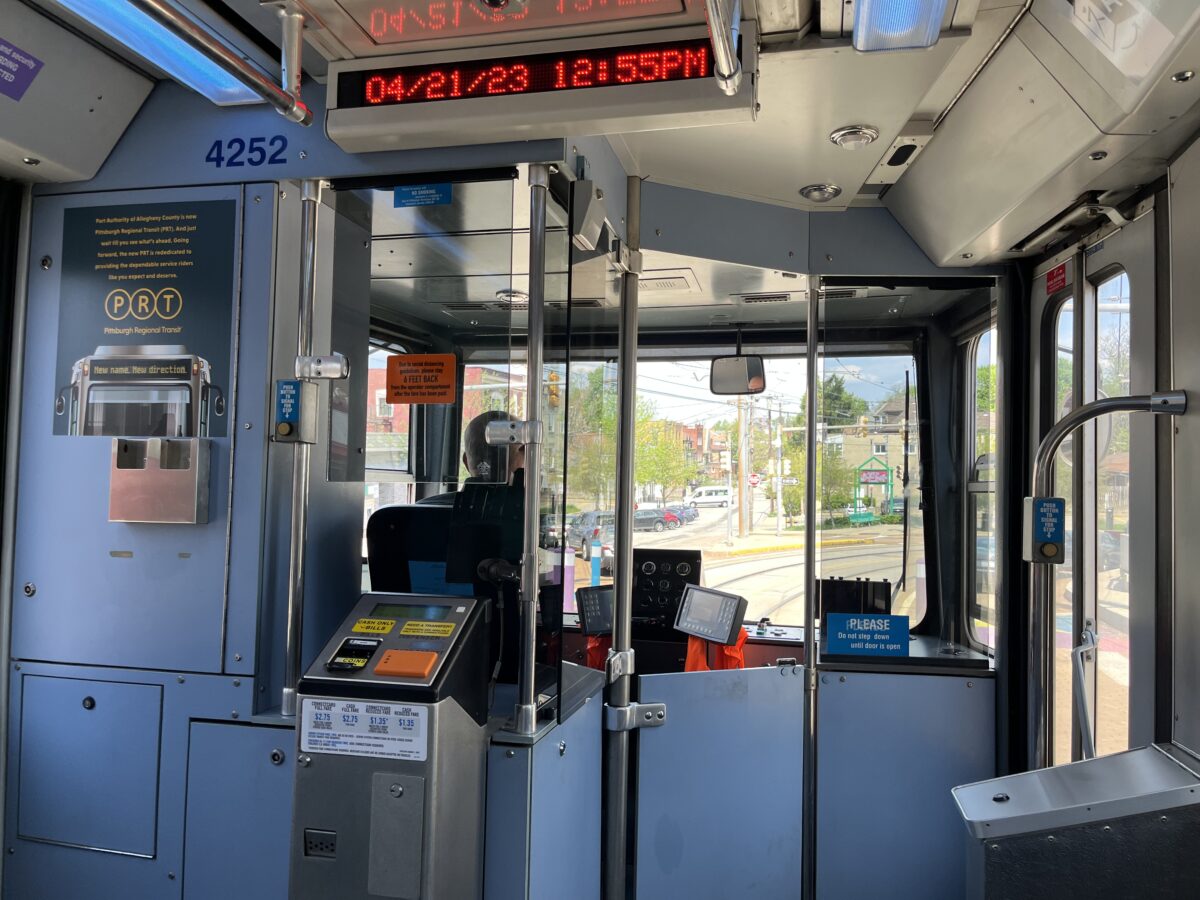Pittsburgh Regional Transit is beginning its largest capital project in decades: replacing all 81 light rail vehicles at a cost of more than $500 million.
The agency included $1 million in the preliminary capital budget next year to begin preliminary design work on the new trains, followed by a year of designing and testing a prototype. After that, it will take five to seven years to build and deliver the fleet.
CEO Katharine Eagan Kelleman said she is “very happy” the agency finally is moving ahead with the new trains, which serve customers from Pittsburgh’s South Hills to Downtown Pittsburgh and the North Side. That’s because 53 of the trains manufactured by the former Siemens AG are about 37 years old, dating back to the construction of the system in the 1980s, and are near the end of their useful life.
The rest, manufactured by CAF, are about 20 years old. They are at the point where they need major upgrades or replacement now and will be close to the end of their life span as the new trains become available more than eight years from now.
The agency already is in discussions with design firms, talking about the specifications it wants in the new trains and determining which firm is best equipped to handle the design, Kelleman said. The agency can’t just buy new trains off the display floor, especially since the local operation is a remnant of the streetcar system and the trains use a uniquely wide track width, 62.5 inches instead of 48 inches.
In addition to substantial upgrades to the passenger compartments, Kelleman said, the new trains will have more powerful engines so they can better handle the hilly local terrain.
The decision to move ahead with new trains comes as passenger traffic on the light rail system continues to lag after the pandemic. The system lost about 80% of its 2019 light rail passengers at the height of the pandemic and is still down about 54%.
Kelleman said the agency briefly looked at whether it should abandon the light rail service and replace it with bus coverage rather than buying new trains and continuing plans to upgrade many of the stations along the system. But the cost of buying several dozen new buses, hiring new operators and providing garage space to maintain the buses quickly dashed that idea, she said.
“We still have so much invested in the light rail system that it would be hard to walk away from it,” Kelleman said. “The likelihood we could reduce our costs and provide the same kind of service is pretty slim.
“Imagine trying to get to the North Side [for stadium events] with no rail service. It is likely more cost effective to stay with light rail and improve what we have.”
Kelleman said there also is more opportunity for transit-oriented development — housing and commercial shops — around light rail stations. She noted there already are plans under development around stations in Dormont and at South Hills Junction.
Of course, the key to replacing the trains is money. Kelleman said she is optimistic the agency would qualify for some of the billions of federal dollars set aside for transit vehicles under President Joe Biden’s infrastructure program.
Kelleman also mentioned one other potential source to pay for the new trains: issuing bonds. The agency has very little long-term debt, and what it has will be paid off in 2029.
“That’s something we’re going to have to look at,” she said.
Correction: This story originally stated that Pittsburgh Regional Transit tracks are unique for being narrow, when in fact they are distinctive for being wide.
Ed covers transportation at the Pittsburgh Post-Gazette, but he's currently on strike. Email him at eblazina@unionprogress.com.



